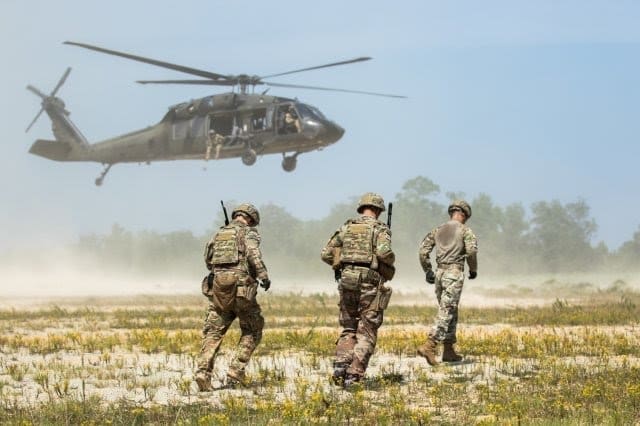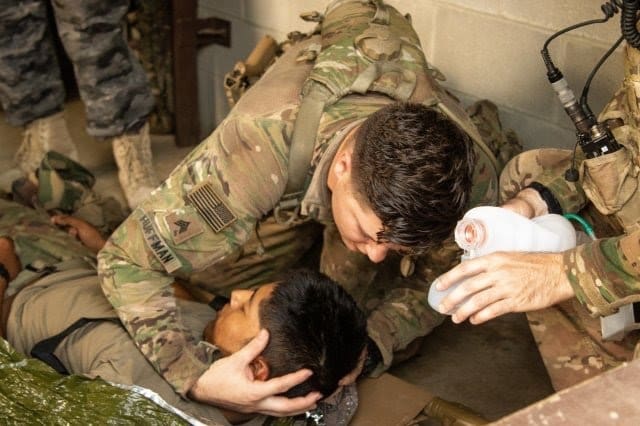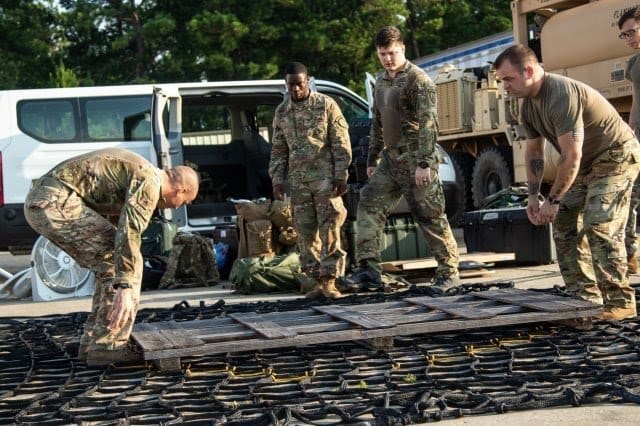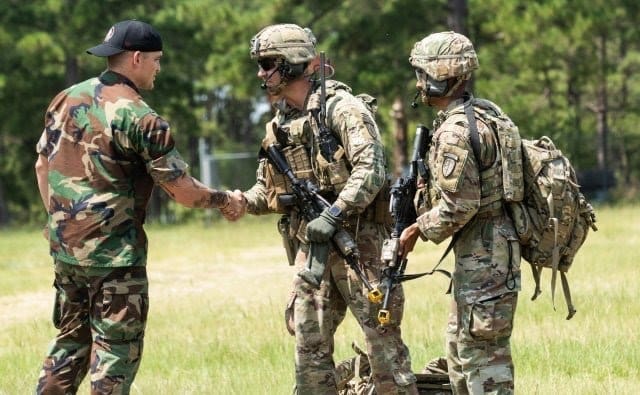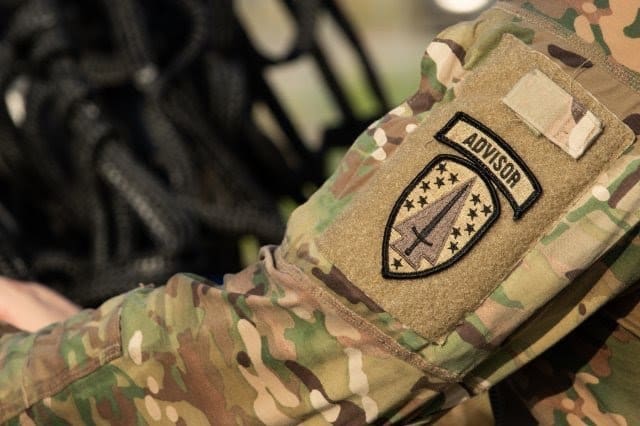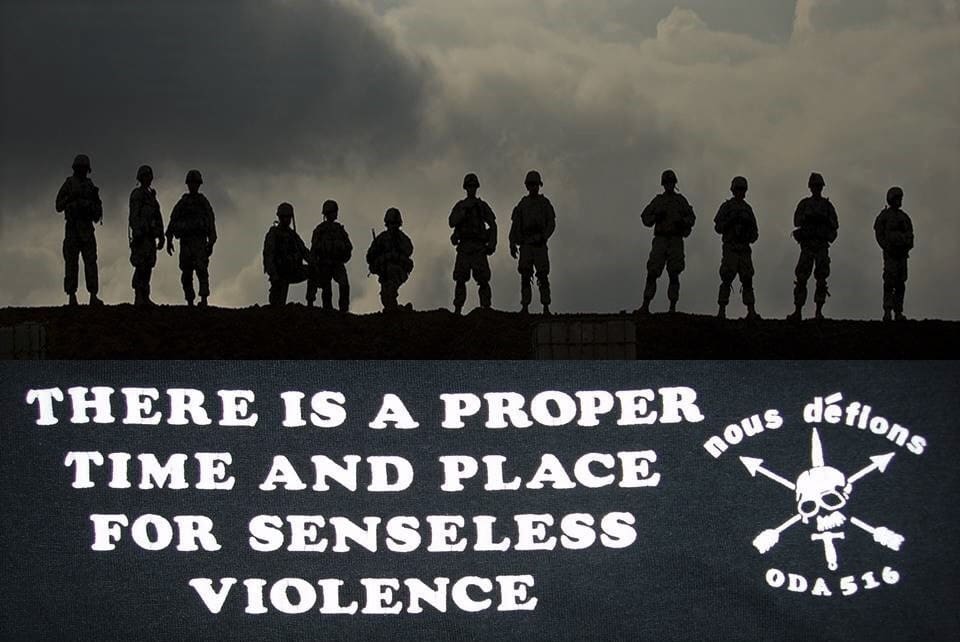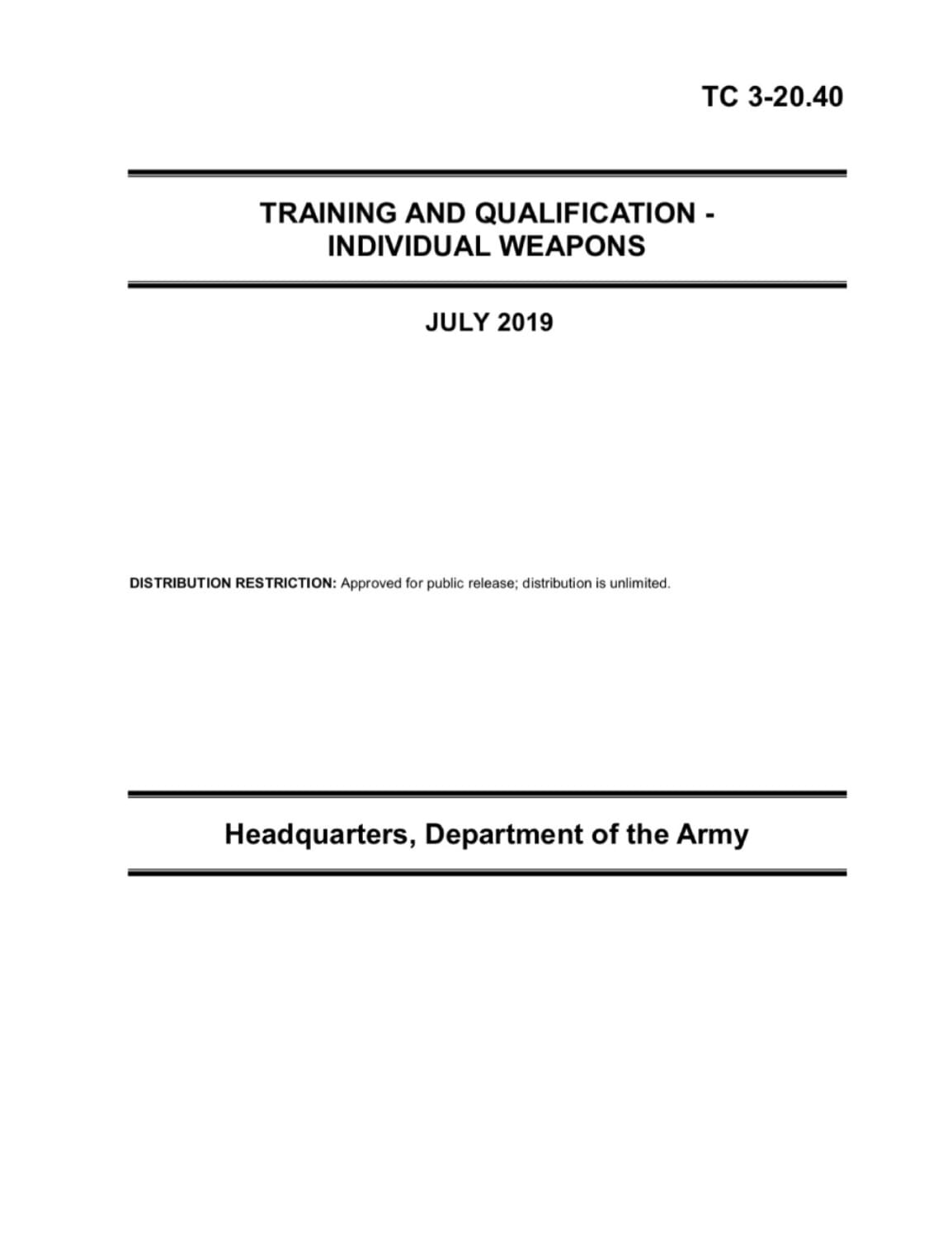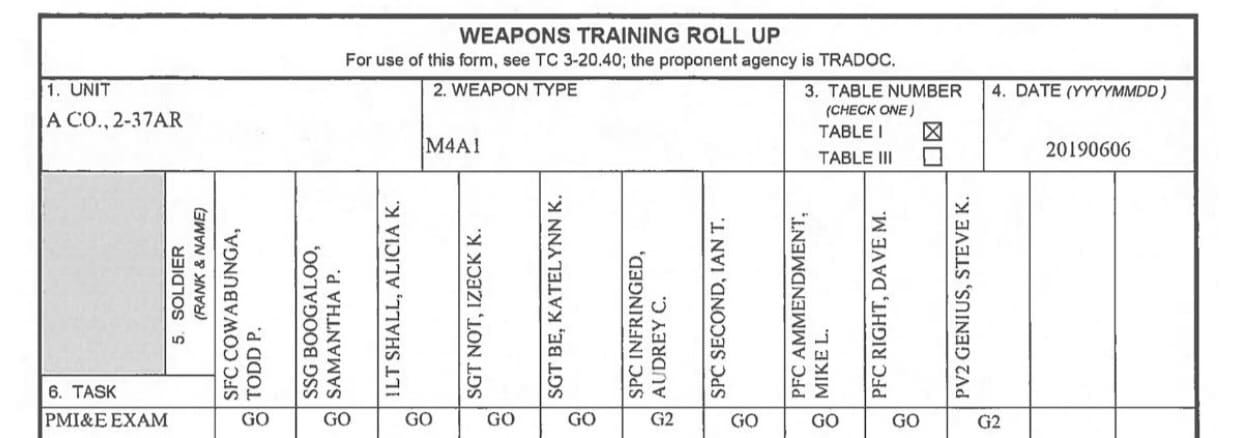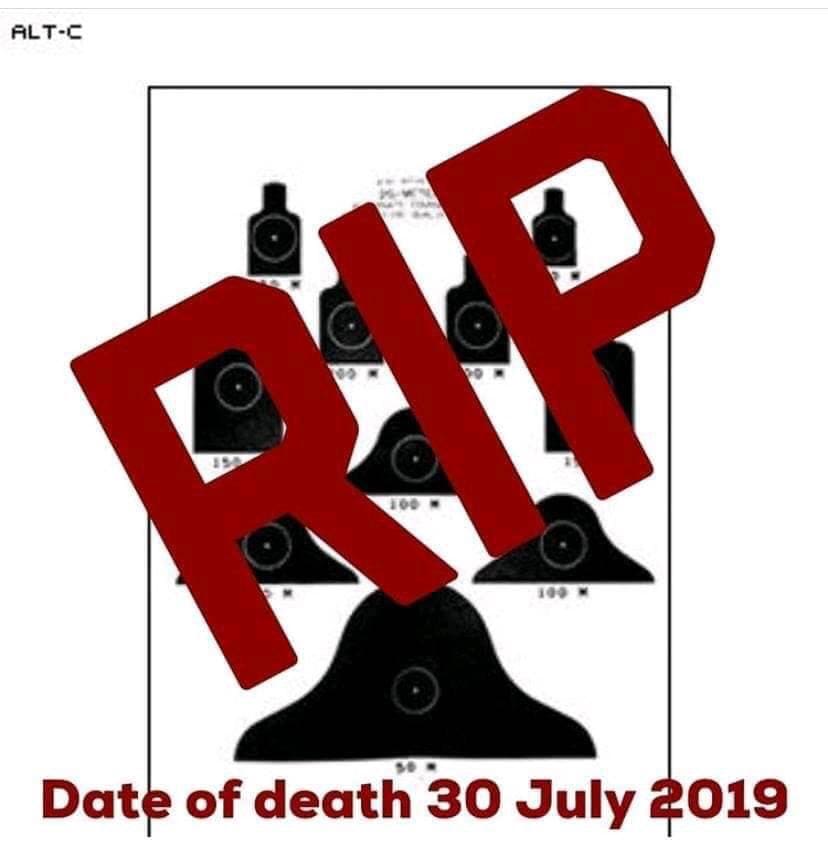This is the official story on the Army’s new TC 3-20.40, Training and Qualification-Individual Weapons.
FORT BENNING, Ga. — The U.S. Army has drawn up a sweeping overhaul of how it will train Soldiers in using small arms — rifles, pistols and automatic rifles — a revamp that adds tougher standards and combat-like rigor to training and testing marksmanship.

The combat-oriented revamp replaces a training system that dates to the Cold War era. It’s geared to ensuring that every Soldier — whether in a combat job or not — is trained from the start to not only hit targets but to have the other basic “tactical” weapon skills needed for combat, according to interviews with officials of the U.S. Army Infantry School at Fort Benning, Georgia.
Those skills include Soldiers’ ability to load, reload and otherwise handle their weapons just as they’d have to in the blur and stress of combat.
The overhaul is spelled out in a new marksmanship manual titled “TC 3-20.40, Training and Qualification-Individual Weapons.”
Referred to informally as the “Dot-40,” it runs to more than 800 pages and contains four chapters and nine appendixes.
“It’s exactly what we would do in a combat environment, and I think it’s just going to build a much better shooter,” said Command Sgt. Maj. Robert K. Fortenberry, who currently oversees the Infantry School’s marksmanship revamp project and is the Infantry School’s senior enlisted leader.
The Infantry School is part of Fort Benning’s U.S. Army Maneuver Center of Excellence, or MCoE.
The Dot-40 applies to the entire Army — the active duty force, including cadets at the U.S. Military Academy at West Point, as well as the Army Reserve and National Guard.
It covers four categories of what the Army considers “individual” weapons: the rifle and carbine; pistol; the automatic rifle; and sniper rifles.
It’s meant as a standardized, one-stop-shop for all Army units to follow in training their troops in individual weapons marksmanship.
And it applies to all Soldiers regardless of whether they’re in combat jobs — Infantry and Armor, for example, or not — a cook, a finance or supply clerk, X-ray technician or a musician in an Army band.
It was developed at Fort Benning over a two-year span by staff of the MCoE’s Directorate of Training and Doctrine, and by the Infantry School, as well as nearly 200 marksmanship experts drawn from across the Army, including the Reserve and National Guard, officials said.
All units regardless of type will be held to the same tougher basic standards. All will have to train their Soldiers in the same skills, and ensure they schedule the same amount, type and frequency of marksmanship training mandated by the Dot-40.
“It was just time for a re-blue,” said Fortenberry, using a term that refers to the re-bluing of firearms. “It’s not to say that what we were doing in the past was wrong. We killed a lot of bad guys in Iraq and Afghanistan and all over the world with our current level of marksmanship training. So it’s not that the old way of firing didn’t teach you how to shoot.
“There was an opportunity to create a fundamental change in regards to marksmanship that more closely aligns with what was done and learned over the past 19 years of combat, making it to where it fits the entire Army as a collective, and makes a more proficient marksman.”
To help foster proper understanding of the Dot-40 and to offer help to units in putting its requirements into action, members of the Infantry School’s Marksmanship Team have begun traveling widely to Army posts and explaining it to key audiences. Those include, among others, senior leaders who head divisions and brigades, as well as Soldiers at what are known as Leadership Professional Development sessions.
In creating the new approach the Army wants to bring all Soldiers to a “baseline” set of marksmanship skills that go beyond what it takes to get a passing score during a “qualification,” a term for a graded shooting test at a firing range.
The ability to hit their intended targets, though crucial, is only one part of the overall marksmanship skill set every Soldier should be equipped with, Infantry School officials said. Marksmanship training should also train Soldiers on the other tasks they’d face in using their weapon in combat, they said.
The Dot-40 mandates a series of drills and tests that check whether Soldiers can rapidly load and reload as they’d have to under fire, work the bolt of their weapon, switch firing positions quickly — standing, kneeling, lying prone, firing from behind a barrier — while at the same time exercising “critical thinking” — making battlefield snap judgments as to which targets to shoot at in which order — and hitting them. All are elemental to being deemed actually proficient in Soldier marksmanship, officials said.
And it adds other new requirements: that Soldiers fire their weapons effectively in night combat scenarios and in conditions that simulate chemical attack.
Marksmanship training in which Soldiers fire from the standing position or while steadying their weapon against a barricade is not new. But under the new methods both will become part of the official, graded marksmanship test each Soldier must pass to be declared “qualified” on use of their weapon.
“You’re employing your weapon system in a more tactical environment or scenario, versus the more traditional way of doing it,” said Fortenberry. “And by doing so, it creates additional rigor, using all of the elements of critical thinking, sound judgment, adapting to change, all of those non-tangible attributes.
“So for the individual, it’s a clear progression, to make them way more capable with their weapon system and all of the nuances that are part of marksmanship,” he said.
“You will work your transitions, from a standing against the barrier, you’ll work the kneeling to the prone, the prone to the kneeling,” he said. “Coaches will be assessing you based upon your transition periods, how well you do it. You’re forced now to pull from your kit and insert magazines.
“Before, commanders, leaders, didn’t have to necessarily focus on that,” said Fortenberry. “It now forces everybody to practice on it.”
Under the old method of marksmanship testing, Soldiers at the firing range would have magazines of ammunition neatly stacked in front of them, and would have to fire in a set progression that tested their aim but not the other weapon-related skills they’d need in a firefight, officials said.
Soldiers being tested during the “course of fire” will be called upon to fire at multiple targets and will have to aim true and think fast. And they’ll have to pull magazines from their combat gear — again, as in combat — rather than reaching to a conveniently placed stack.
“Four targets at a time will present themselves in this new course of fire,” said Fortenberry. “There is a quad series that comes up. How do I engage that? No longer is it stacks of 20 magazines here, stacks of 20 over here. Now you have tens.
“The magazines, now, cannot be pre-staged,” he said. “They have to be in your kit. So you have to pull from your kit, versus stack two over here, two over here, everything looks perfect.
“You now have to shoot from a barrier, from a concealed position. You transition from the prone to the kneeling and the kneeling to the prone. The clock doesn’t stop. So, you have to know — Boom! Got that exposure. Okay. I should be transitioning to the kneeling position now. Transition. There it is! — Boom! And then you’re engaging as you go.”
Also before the Dot-40, Soldiers were allowed to call for a time-out — an “alibi” in Army parlance — if their weapon were not working properly during the marksmanship test.
The Dot-40 changes that, too.
“Alibis are gone,” said Fortenberry. “‘Hey, Sarge! Got an alibi on lane three! Weapons malfunction!’ There’s no alibis anymore. You have to fix the malfunction,” just as a Soldier would have to in combat, he said.
If, however, a time-out were warranted, he said, leaders would be authorized to permit it but on a case-by-case basis.
Also mandated in the Dot-40 is use of indoor, electronic firing ranges as one of the methods to be used in teaching Soldiers to shoot. The electronic ranges, often called simulators in the Army, make marksmanship training more efficient and cheaper than relying solely on outdoor ranges.
The simulators are equipped with a set of stations from which Soldiers fire their weapons at electronic screens that display targets. The electronic equipment captures precisely where each shot landed. And it shows details of how the Soldier held the weapon when firing. Such details greatly aid instructors in assessing whether the Soldiers are holding their weapons properly and in coaching them toward becoming good shots.
Use of simulators for individual weapons training is also not new. But before the Dot-40 it was left to units’ discretion as to whether they’d use them. The Dot-40 requires their use.
All units regardless of type will be held to the same new, tougher basic standards. All will have to train the same skills, and ensure they schedule the same amount, type and frequency of marksmanship training mandated by the Dot-40.
But besides being a means of new, higher standards that lead to greater weapons proficiency at the shooter level, the Dot-40 is also meant to help all units Army-wide know through a single manual exactly what’s required of them.
Officials were concerned that the Army’s small arms methods had long been spread among numerous manuals in a way that could work against a unit being able to conveniently pin down all they had to do to meet the Army’s requirements consistently.
The Dot-40 codifies the new methods in a single, handy source for individual weapons, officials said.
“The Dot-40 was designed simply because we had multiple manuals and multiple best practices,” said Fortenberry. “And we were just grabbing whatever was on the shelf. We had nothing that spoke to individual marksmanship other than a very broad series of best practices, manuals. It hadn’t been evolved over time.
“What the Dot-40’s done is it’s now given everybody common ground, common understanding of marksmanship and how to effectively employ their weapon system,” Fortenberry said.
“Now,” he said, “they can grab the Dot-40 and say, ‘We need to get after individual marksmanship. What’s our way ahead?’ ‘Well, sir, based upon the Dot-40, we can lay this progression out.’ It gives them a template to design a training week or eight-week training model” to follow.
“We’re calling it ‘new’ but it’s truly not new,” said Fortenberry. “It’s a revamp definitely, an overhaul, of what we were already all doing. We now have synchronized it all and we have now built it all into a one-stop-shop.
“We are trying to give the Army something better than it had before, incorporate all these components that give a good, baseline-level of proficiency that is better than it was,” he said. “And it is achievable and attainable by every Soldier in the Army. Not just a qualification on the wall. They are proficient. They’re capable.”
The requirements outlined in the Dot-40 become part of the Army’s broader, overarching “Integrated Weapons Training Strategy,” which encompasses the Army’s training methods for all categories of its weapons.
The Army will give itself a year to have the new methods take effect, starting this October.
“Every commander and leader out there wants a Soldier to be trained and proficient in warrior tasks and drills, marksmanship being one of those — be able to place effective fires on the enemy,” said Fortenberry. “So the intent has never changed. This just grabs all the tools and gives them a blueprint to achieve that end state.”
Story by Franklin Fisher
Photo by Markeith Horace
